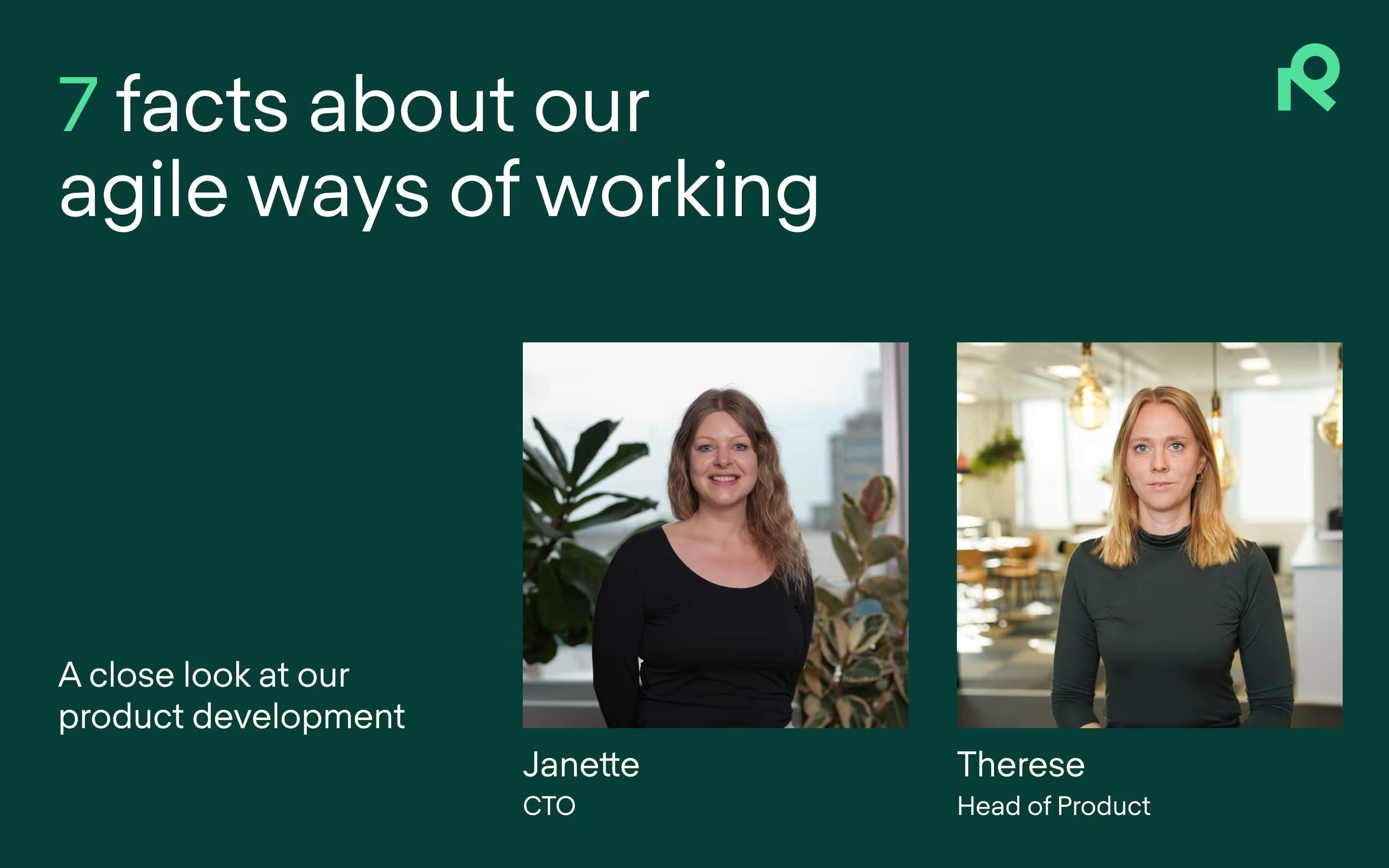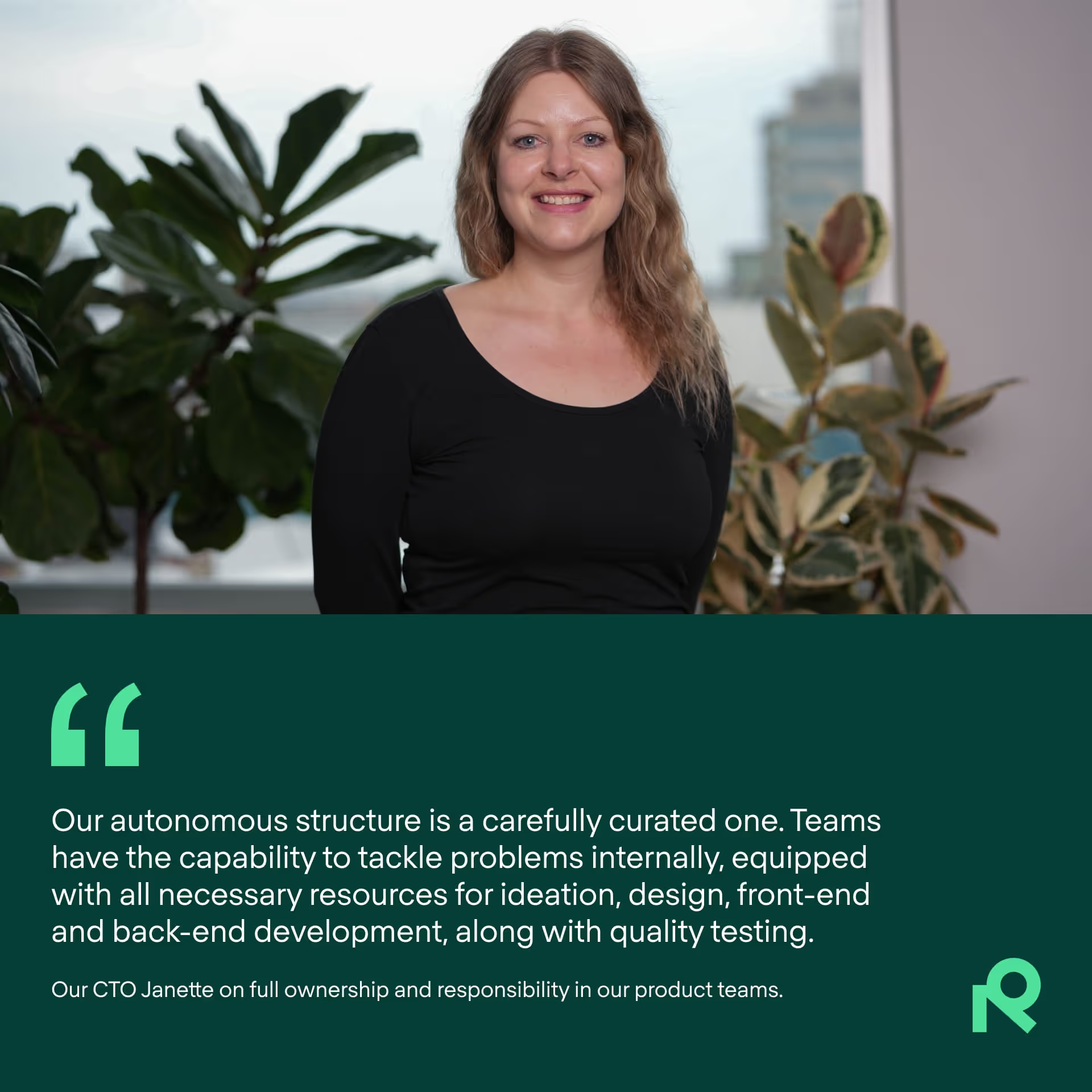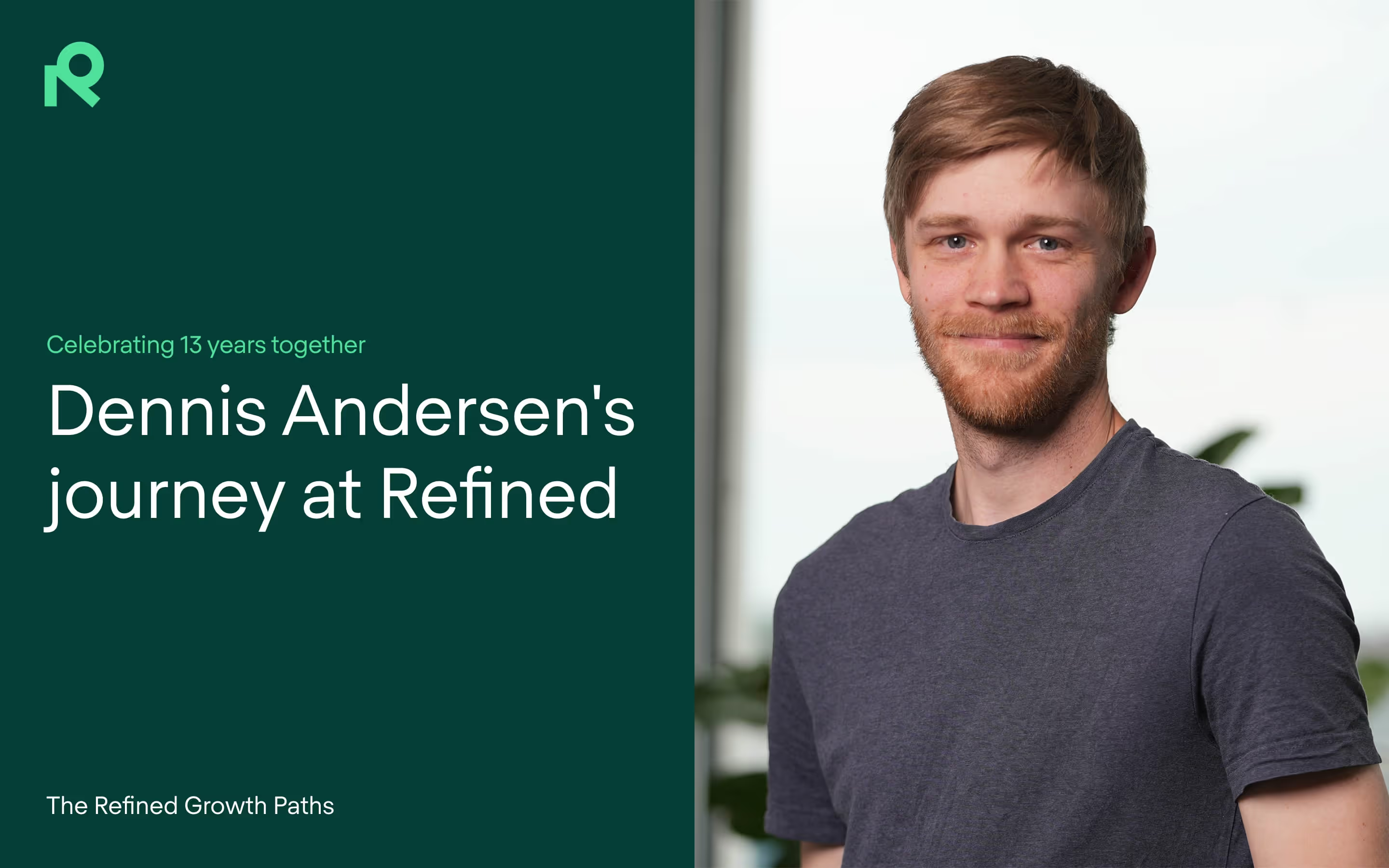A close look at our product development – Part 1: 7 facts about our agile ways of working

At Refined, we have a strong emphasis on work-life balance, autonomy, and impactful work. Our product development practices are designed to support these values, fostering an environment where each team member can thrive and make meaningful contributions.
In this first part of our series, our CTO Janette Hagerlund and Head of Product Therese Alburg share seven key facts about the unique agile ways of working within our product teams.

At Refined, the concept of "projects" takes a backseat. Instead, as Janette and Therese highlight, the focus is on end-to-end product ownership.
"We don’t really do projects," says Janette.
Echoing this, Therese adds, "Generally, that's true. Our approach prioritizes working comprehensively with the product from end-to-end through the entire lifecycle of a product."
With this idea in mind, let’s dive into…
The 7 facts about the agile ways of working at Refined
Fact #1: Full ownership and responsibility is in the product teams
Our approach empowers product teams to take ownership and responsibility for their specific focus areas in the product, fostering a seamless workflow minimizing dependencies on other teams.
“This autonomous structure is not just a random choice but a carefully curated one, rooted in best practices observed in successful product companies," Janette notes, highlighting the autonomy provided to teams.
The teams are given the freedom and framework to address customer needs, opportunities, and are responsible for running the business aspect and fixing bugs.
"Teams have the capability to tackle problems internally, equipped with all necessary resources for ideation, design, front-end and back-end development, along with quality testing," she elaborates.
Therese points out the scalability of this model: "In smaller companies, collaboration is straightforward since everyone is aware of what others are working on. However, as we expand, maintaining that level of awareness becomes challenging. Our approach is designed to address this issue effectively."

Fact #2: Supportive culture over rigid processes
"Our primary focus is ensuring that the tools, processes and systems available to our teams enhance their workflows. The tools are meant to empower the teams, not just exist as utilities. Our methodology dictates our choice of tools, not the other way around," Janette says.
This philosophy underscores our belief that operational tools and processes should empower teams, rather than constrain them. Central to our operational strategy is the notion that a strong, supportive culture trumps rigid processes, especially within a growing company.
Fact #3: We have chosen tools, systems and processes that empower
On the subject of tools, Refined relies on several key systems to maintain its agile workflow.
"Generally, we use ceremonies from Scrum like daily standups and retrospectives, that can also be seen as tools," Janette adds, underlining the importance of structured yet flexible processes.
These ceremonies provide a platform for all team members to raise questions, share praises, or voice any concerns, promoting open communication and continuous improvement. Decision-making autonomy and the encouragement to iterate on working methods are also pivotal.
Janette further shares, "We try to automate everything to have as little boring manual work as possible."
As an Atlassian marketplace partner, we are utilizing a wide range of Atlassian tools and have configured Jira to align perfectly with our teams’ methodologies, ensuring it can be adapted as needs evolve. Additionally, tools like Slack and Google Meet facilitate asynchronous communication, while Miro offers a dynamic space for team retrospectives, ideation, and brainstorming, akin to in-person interactions.
Fact #4: Customer-centric development is our core value
Therese sheds light on how customer feedback directly influences product development.
"We have a lot of customer touchpoints where we can gain insights," she explains.
For example, we have a dedicated Jira project for customer feedback that allows the team to prioritize actions based on the prevalence of certain feedback. This customer-centric approach ensures that the product team not only understands the most popular customer requests but also engages with customers to comprehend the root causes of their feedback, aligning it with our long-term strategy.
Our vision is to bring the entire team even closer to customers. The goal is for every team member to have a deep understanding of how customers use the product, enabling them to make informed decisions independently.

As a practical step towards this customer-centric vision, Janette mentions inviting customers to company-wide meetings and ensuring all employees have the opportunity to see firsthand how their work impacts users. This underscores the fact that direct customer exposure is important even in a volume business.
Fact #5: Clear and practical process for innovation
When it comes to innovation, we have a clear process.
"Leadership sets the direction using OKRs (Objectives and Key Results), stating clearly the key objectives and how we’ll measure key results," Therese states.
This framework allows teams to understand overarching goals while retaining the freedom to brainstorm and propose solutions at the team level. To ensure these solutions then align with customer needs, we actively engage in beta testing and collaborative sessions with our users.
Janette mentions, "Beta testing with customers and sessions together with customers help us have a better understanding."
Such initiatives ensure that new features meet actual customer needs, marrying innovation with practicality.
Fact #6: Cross-functional collaboration and seamless integration between teams
Cross-functional collaboration is a critical component in ensuring a unified approach to product development and customer satisfaction at Refined.
Therese details the process, saying, "For instance, any member of our company who interacts with a customer and learns about a potential improvement, or comes up with an idea themselves, is encouraged to add it to a designated Jira project."
This practice exemplifies the seamless integration between departments, particularly with marketing. Teams work closely from the early stages of development to discuss naming, development strategies, and packaging, fostering collaboration well before a product's release.
Beyond marketing, product teams maintain touchpoints with nearly all departments, exchanging feedback and insights that contribute to a cohesive product strategy.
Fact #7: We measure success through metrics that emphasize both continuous improvement and wellbeing
We gauge the success of our product teams' agile and innovative practices through a focused application of OKRs alongside specific team metrics.
These metrics are dual-purpose, aimed at capturing both the qualitative feelings of the team regarding their work environment and the quantitative output, such as velocity and bug resolution.
This method of combining subjective experiences with objective results offers a unique and insightful metric, highlighting not just what the teams accomplish but how they feel about their work and processes. This balanced approach to measurement ensures continuous improvement and fosters our culture that emphasizes wellbeing.
Next up: discover our challenges and solutions in agile practices
We've now shared seven key facts about our agile practices at Refined, providing a glimpse into how we create and deliver value. Understanding these fundamentals is crucial for grasping the complexities and nuances of our product development journey.
Stay tuned for the next part of our series, where we dive deeper into the challenges we've faced in implementing agile methodologies and the innovative solutions we've developed. Don’t miss it – read Part 2 here.
Read more about



Try Refined free for 30 days
























